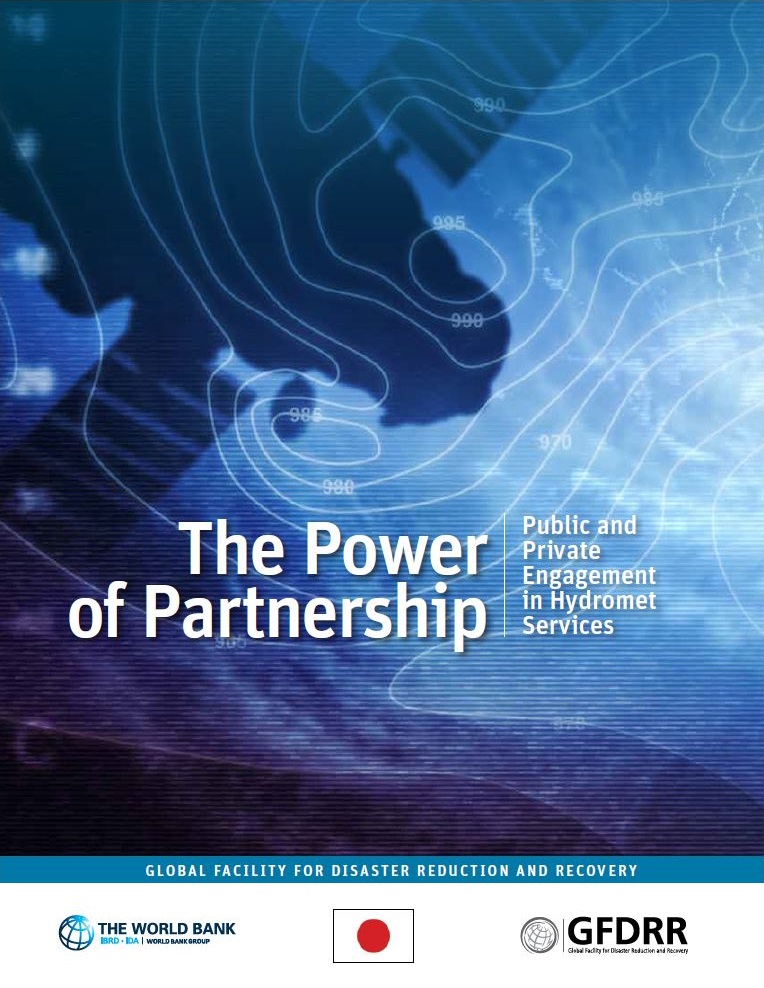Effective weather, climate, and hydrological services (hydromet services) are critical to protect lives and property and to enhance socio-economic benefits. However, many National Meteorological and Hydrological Services (NMHSs) are facing serious challenges in responding to increasing societal and economic demands. The issue is more severe in low- and some middle-income countries where due to lack of resources, basic infrastructure, technical capacity, and visibility within their governments, timely provision of hydromet services and of adequate response are major difficulties.
At the same time, technological advances and open data policies have significantly enlarged the role of the private sector in the provision of hydromet services. Leveraging private sector capabilities without jeopardizing the provision of public hydromet services is a key condition to maximize socio-economic benefits. There is thus much interest among countries and stakeholders to explore the best ways of maximizing the public-private engagement (PPE) opportunities in their development projects.
The study looks at the current landscape of public-private engagement and analyzes the hydromet value chain in six countries. It is based on evidence collected through the analysis of eight countries selected as case studies (Ghana, Indonesia, Japan, Myanmar, U.K., U.S., Germany, and Israel) and interviews with more than 50 stakeholders from the public, private, and academic sectors. It provides guidance to regulators, hydromet service providers, and private actors as well as development practitioners to achieve successful public-private-academic engagements.
Hydromet Value Chain
The analysis is based on a simplified hydromet value chain, which is represented in the figure below along with its key enablers. In the country case studies, the level of development (or «maturity»”) of the hydromet value chain elements is assessed as is the relative importance of the contributions of the public, private, and academic sectors. These elements define, along with the relevant regulatory framework, the country-specific boundary conditions for PPE.
Show enablersHide enablersInstitutional / organizational enablers
The capacity of public, private, and academic institutions to co-design, co-implement, and co-manage the hydromet value chain.
The capacity to innovate value chain elements. Research and development are much interlinked with the cooperation between the public and academic sectors. One of the challenges of such cooperation is the different timescales: the long-term objectives of applied research and the short-term operational needs.
The capacity to develop individual and organizational skills needed in the hydromet value chain.
Technical enablers
The ability to collect data (e.g. from automatic weather stations) and to make the data available where needed. Likewise, the ability to disseminate data and the derived information to where they are needed. Notably, this in- cludes the dissemination of official warnings.
Required infrastructure in support of the hydromet value chain. Of specific interest are the availability of electrical power and suit- able ICT systems.
Value Chain
Observations
This subsumes all observations, including the operation of manual and automatic weather stations, upper air stations, remote sensing, aircraft-based sensors, Internet of Things (IoT) sensors, etc. No distinction is made here between high-quality observations used in data assimilation and other observations (e.g. used in post-processing of numerical weath- er prediction results).
Numerical weather prediction
The creation, operation, and maintenance of numerical weather prediction systems, including global and limited-area models.
Generate forecast
The manual or automatic evaluation of available data, including NWP outputs to generate weather fore- casts. This includes post-processing of NWP outputs such as to increase forecast quality with the help of model output statistics.
Issue official warnings
The issuance of official warnings which can lead to emergency procedures (e.g. evacuations). Note that the dissemination of official warnings is not included in this element: it is included in the data and information dissemination.
Tailored services
The design and delivery of hydromet products and services are tailored to inform operational decisions. For example, deliver agricultural forecasts that help farmers to determine when to plant, fertilize, or apply pesticides. For the purposes of this report, tailored services also include issuing and disseminating warnings that do not have official status alerts (e.g. alerting farmers to changes to an earlier forecast as well as disseminating official warnings).
Business data integration
Industry-specific forecast services where up-to-date business data are integrated with weather information. Examples include supply chain optimization for beverage distribution.
Value Chain
Observations
This subsumes all observations, including the operation of manual and automatic weather stations, upper air stations, remote sensing, aircraft-based sensors, Internet of Things (IoT) sensors, etc. No distinction is made here between high-quality observations used in data assimilation and other observations (e.g. used in post-processing of numerical weath- er prediction results).
Numerical weather prediction
The creation, operation, and maintenance of numerical weather prediction systems, including global and limited-area models.
Generate forecast
The manual or automatic evaluation of available data, including NWP outputs to generate weather fore- casts. This includes post-processing of NWP outputs such as to increase forecast quality with the help of model output statistics.
Issue official warnings
The issuance of official warnings which can lead to emergency procedures (e.g. evacuations). Note that the dissemination of official warnings is not included in this element: it is included in the data and information dissemination.
Tailored services
The design and delivery of hydromet products and services are tailored to inform operational decisions. For example, deliver agricultural forecasts that help farmers to determine when to plant, fertilize, or apply pesticides. For the purposes of this report, tailored services also include issuing and disseminating warnings that do not have official status alerts (e.g. alerting farmers to changes to an earlier forecast as well as disseminating official warnings).
Business data integration
Industry-specific forecast services where up-to-date business data are integrated with weather information. Examples include supply chain optimization for beverage distribution.
Guidelines for choosing the optimal service delivery model
The delivery of hydromet services along the hydromet value chain can be organized in different ways. The model chosen for a specific country depends not only on the economic principles discussed above but also on the country-specific situation and priorities. The following guidelines can help countries to navigate the issues and to decide on the optimal service delivery model.
Click on each panel to learn more
Define which services should be provided by the hydromet value chain
This has to be done by considering the country-specific public interest and the potential socio-economic benefit those services provide. Some aspects of the public interest are equally important for most countries (e.g. safeguarding lives and property); others differ from country to country. For instance, country-specific public interests can be dependent on geographical features (e.g. a landlocked country does not need marine forecasts), economic priorities (e.g. agriculture, fisheries, and off-shore drilling), or geopolitical requirements (e.g. worldwide operating armed forces).
Assess which services are public services and which are not
The assessment should be based both on supply- and demand-side characteristics:
- Does a service have public good characteristics?
- Is there public interest in providing the service (e.g. public safety and security)?
- Is there a natural monopoly in the sense that production by multiple suppliers is costlier than production by a single supplier?
- Are economies of scale and/or scope to be expected?
Services which are of public interest and which show public good characteristics or natural monopoly features should be considered public services. In the typology introduced earlier, public services include «basic systems» and «basic services».
Determine the form of service provision for public services
- Choose between a «do-it-yourself» option and a «contracting-out» option for the provision of public services: Which public services should be produced by the NMHS and which public services should be contracted to the private sector? Beside strategic considerations, decisive factors may also include the feasibility of sustainable long-term contracts with the private sector and the cost of service provision. Even if some services are contracted to the private sector, the public sector must ensure the provision and the quality of public services. Hence, the NMHS (if it has regulatory duties) or another regulatory body must be able to provide the necessary technical and organizational oversight.
For the part of the basic system with strong natural monopoly supply features, a regulated private monopoly could be an alternative to the production by the NMHS, although such practice is not common for hydromet services today. - Determine the funding mechanism for public services: taxes or fees. Fees are applicable only if a clearly defined sub-set of the population uses the services/products.
Organize the form of service provision for non-public services
Three approaches can be identified for the provision of non-public services:
- Provision by the private sector without any hydromet-specific regulation;
- PProvision by the private sector with some form of hydromet-specific regulation (e.g. licensing and quality requirement); and
- PProvision by a public entity complying with competition policy and competitive neutrality to ensure a level playing field.
The last option may provide a government the best value for money. However, it is very challenging from an institutional perspective, as a regulator must ensure a level playing field between the private and public sectors. This is especially challenging if public and non-public services are produced within the same organization. Moreover, from a regulatory perspective, it is a complex task which requires strong institutions and a developed legal framework. This point is particularly critical for most developing countries where institutions and the legal framework may not be adequate yet.
Hydromet Value Chain: Country Cases
The study looks at the current landscape of public-private engagement and analyzes the hydromet value chain in six countries. The diagrams summarize the maturity of the country’s value chain and its components. The balance between the public and private sectors and the role of academia are depicted as well. The maturity of each sector is assessed as advanced, intermediate, low, or not available. The importance of each sector in the provision of services is qualitatively categorized as notable, substantial, or dominant; the relative size of shapes in the diagrams reflects this categorization and cannot be interpreted as a quantitative measure.
Key
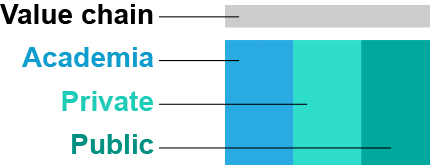 Advanced
Advanced Intermediate
Intermediate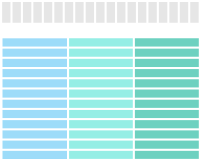 Immature
Immature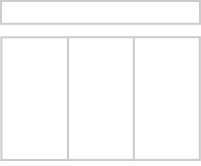 N/A, Unknown
N/A, Unknown
Choose countries to compare:
Choose any country to compare to the USA:
- USA
- UK
- Japan
- Indonesia
- Myanmar
- Ghana
Observations




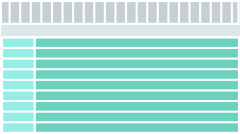
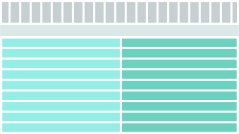
Numerical weather prediction




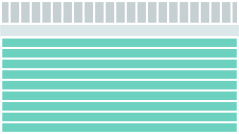
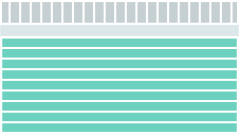
Generate forecast






Issue official warnings




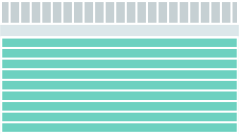
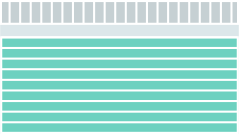
Tailored services




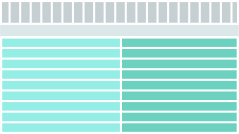

Business data integration



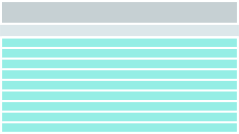


- USA
- UK
- Japan
- Indonesia
- Myanmar
- Ghana
Observations






Numerical weather prediction






Generate forecast






Issue official warnings






Tailored services






Business data integration






Reference Scenarios
Options for public-private engagement must be assessed for each country in the context of its hydromet value chain maturity, its laws and regulations for the provision of hydromet services, and the way it provides public services. Three scenarios—Jump-start, Strengthen, and Optimize—illustrate how the available options change with a given situation. Each scenario combines a typical given situation with a possible strategy to achieve a desired realization for hydromet value chain development. The graphic summarizes the given situation, strategy, and realization for each scenario.
Given situation
«Immature»: The value chain has low maturity. Public services have significant gaps. National services have no advantage over international offerings.
Strategy
Establish a value chain and unlock existing potential.
Realization
The public and private sectors co- operate in a sustainable hydromet value chain of intermediate ma- turity. Development partners and transnational companies support the provision of public services.
Given situation
«Intermediate»: The value chain meets a few of the country’s needs. The NMHS is spread thin, providing public services and non-public services to recover cost.
Strategy
Prioritize a well-functioning NMHS focused on providing public services and enabling the national private sector to provide non-public services.
Realization
A strong NMHS provides public services and enables the private sector to provide non- public services in a sustainable hydromet value chain of intermediate to advanced maturity.
Given situation
«Advanced»: The value chain serves the country’s needs. Public service cost/value ratio needs to be optimized.
Strategy
Reduce public service cost without sacrificing quality.
Realization
The public and private sectors cooperate in an optimized advanced value chain that minimizes the cost of public services without loss of quality.
Main Conclusions and Recommendations
The study establishes guiding principles for cooperation between the public and private sector, adding to an already broad understanding of development of a hydromet value chain to maximize its socio-economic benefits. The recommendations that are derived from the conclusions of the study can be used for preparation of agile development projects by various stakeholders.
The socio-economic benefits of hydromet services are underestimated
Governments tend to underestimate the socio-economic benefits of a well-developed hydromet value chain —especially, but not only in developing countries— even though they are by now well documented (e.g. WMO 2015a). Consequently, development of the whole value chain is often not prioritized, potential benefits are not realized, and regulatory policies are mainly discussed with respect to their effects on the NMHS alone or related public entities.
Economic principles should guide models of service delivery
The economic properties of hydromet services must be strongly considered in the design of the regulatory framework governing the service delivery models. This study discusses key economic principles and provides guidelines for choosing the optimal service delivery model for different types of hydromet services.
Government commitment to the hydromet domain is a smart investment for safeguarding the public
The private sector can flourish when governments support a public entity to provide public hydromet services. A government may receive support from development partners to start the process, but ultimately the government is responsible for sustained (through operations and maintenance) public hydromet services.
Understanding the characteristics of a hydromet value chain is essential for developing PPE
To leverage PPE in any given country, it is indispensable to understand the whole hydromet value chain in that country. The three aspects are crucial: maturity of the hydromet value chain (how mature is the hydromet val- ue chain and each element of the value chain in a given country); sector balance (to what extent do the public, private, and academic sectors contribute to the hydrom- et value chain); and policy framework which shapes the hydromet value chain.
The approach to hydromet value chains varies considerably among countries
The case studies show considerable differences not only between developed and developing countries, but also between countries with similar levels of development.
Developing PPE requires a systematic approach
The study identifies several good practices to foster the development of a sustainable hydromet value chain or of successful PPE. These good practices are in the area of governance, funding of public services, capacity building, development support, and sustaining technical infrastructure and expertise. While referring to these good practices, country-specific action plans to build and strengthen the hydromet value chain need to be developed (e.g. based on the three reference scenarios men- tioned above).
The academic sector is an important vehicle for PPE growth in the hydromet domain
Research and development ensure the ability to innovate value chain elements pushing boundaries of the entire global weather enterprise. Taking advantage of scientific advances and applying them in the specific context should be regarded as one of the critical enablers of the hydromet value chain while availability of human resource with required skillsets increases its sustainability.
Key elements of the regulatory foundation for PPE are the NMHS mandate and the data access policies
The mandate and the duties of the NMHS, as well as all policies regarding data access, are the key regulatory aspects relevant to PPE. If the role of the NMHS is not clearly defined and if there is no clear distinction between public and non-public services, the development of the value chain and vibrant and purposeful cooperation between the public and private sectors is hindered.
Consistency of severe weather warnings is critical
The coexistence of public and private weather information providers can lead to inconsistent warnings with low perceived quality and (thus) low effect. This is a much-debated topic and a key challenge in the relationship between the public and private sectors. Strong coordination or regulation where applicable (e.g. by establishing mandatory standards for visualization and classification of warnings) and careful consideration of the communications of warnings and the degree of public trust are needed to ensure consistency and thereby the effectiveness of the system. In particular, official warnings must be easily recognizable as official.
Development projects should focus on improving the whole value chain in an inclusive manner
Many development projects focus primarily on NMHS infrastructure and capacity, thereby losing sight of the impacts of the value chain. While these effects may be inherent to the framework of development cooperation, it would be beneficial to explore possibilities to reshape the setup of future development projects. The findings of this study can inform this process and help to align the incentives of future projects.
Country-specific strategy
- 1. Develop country-specific approaches to foster PPE, starting from one of the reference scenarios «Jump- Start», «Strengthen», or «Optimize».
- 2. Develop an overall strategy at the country level to maximize socio-economic benefit of the full hydromet value chain.
Institutions and policies
- 3. Support the development of a transparent legal and regulatory framework.
- 4. Properly and sustainably fund the NMHS according to its role.
- 5. Aim for an open and free access to all data and public services produced by public entities.
- 6. Consider minimal regulation of the non-public hy- dromet services market.
- 7. Minimize the role of public entities in the provision of non-public hydromet services. If non-public hydromet services are provided by public entities or state-owned companies, an independent regulator must ensure a level playing field between the private and public sectors.
- 8. Ensure the consistency and effective communication of severe weather warnings, either by designating a single authoritative voice for issuing warning or by fostering a better coordination between the issuers of warnings.
Dialogue and awareness-raising
- 9. Develop a structured, continuous, and open dialogue between the public, private, and academic sectors to promote trust between the sectors, to clarify the boundary between public and non-public services and to sustain the hydromet value chain.
- 10. Invest in awareness-raising, especially concerning the socio-economic benefits of hydromet services and the benefits of using hydromet information for businesses.
Development projects
- 11. Shape future development projects based on recommendations 1 to 10, for instance:
- Use scenario-based planning to align stakeholders and create project plans that can be easily adapted to changing circumstances.
- Embrace a lean start-up approach, especially for low-maturity value chains.
- Prioritize and support the review or the development of sound policy frameworks.
- Build the commitment of governments by cost-benefit analyses showing the hydromet value chain impact and by supporting the NMHS in raising its profile.
- Focus the incentives for development partners on sus- tainable hydromet value chain impact rather than investment volumes.

